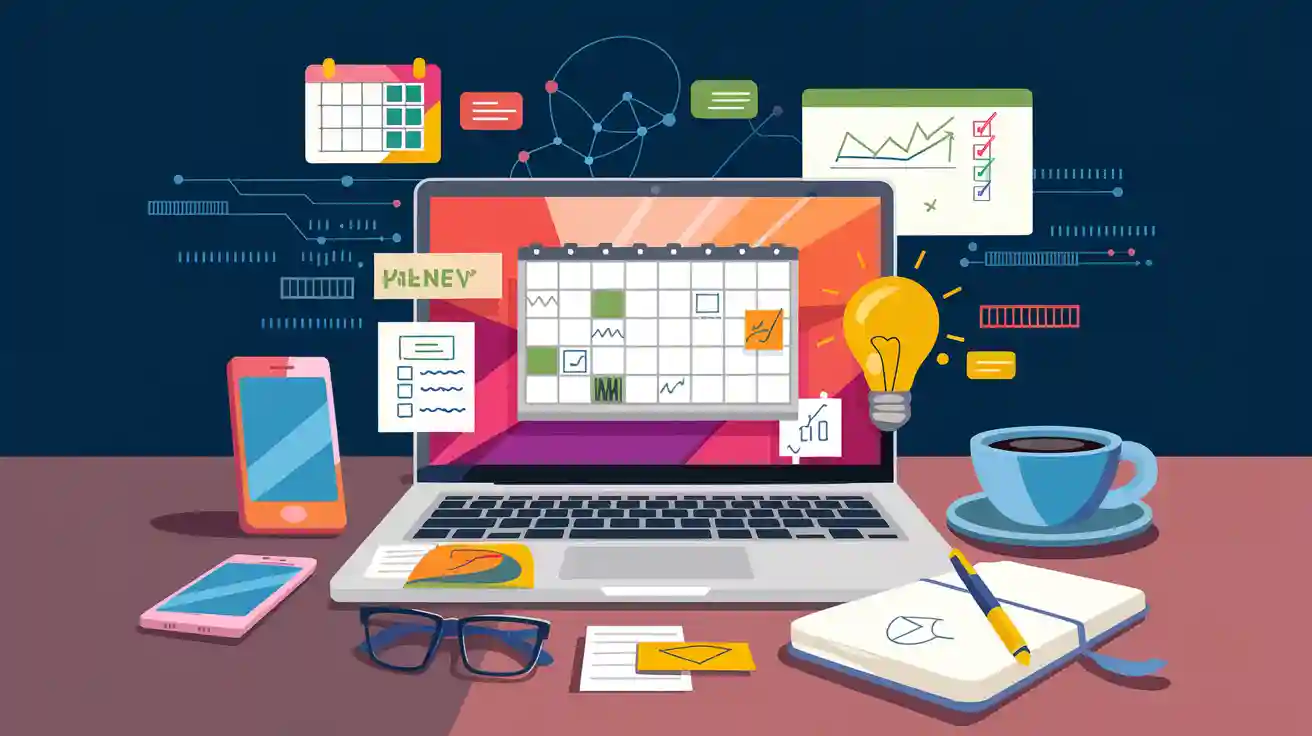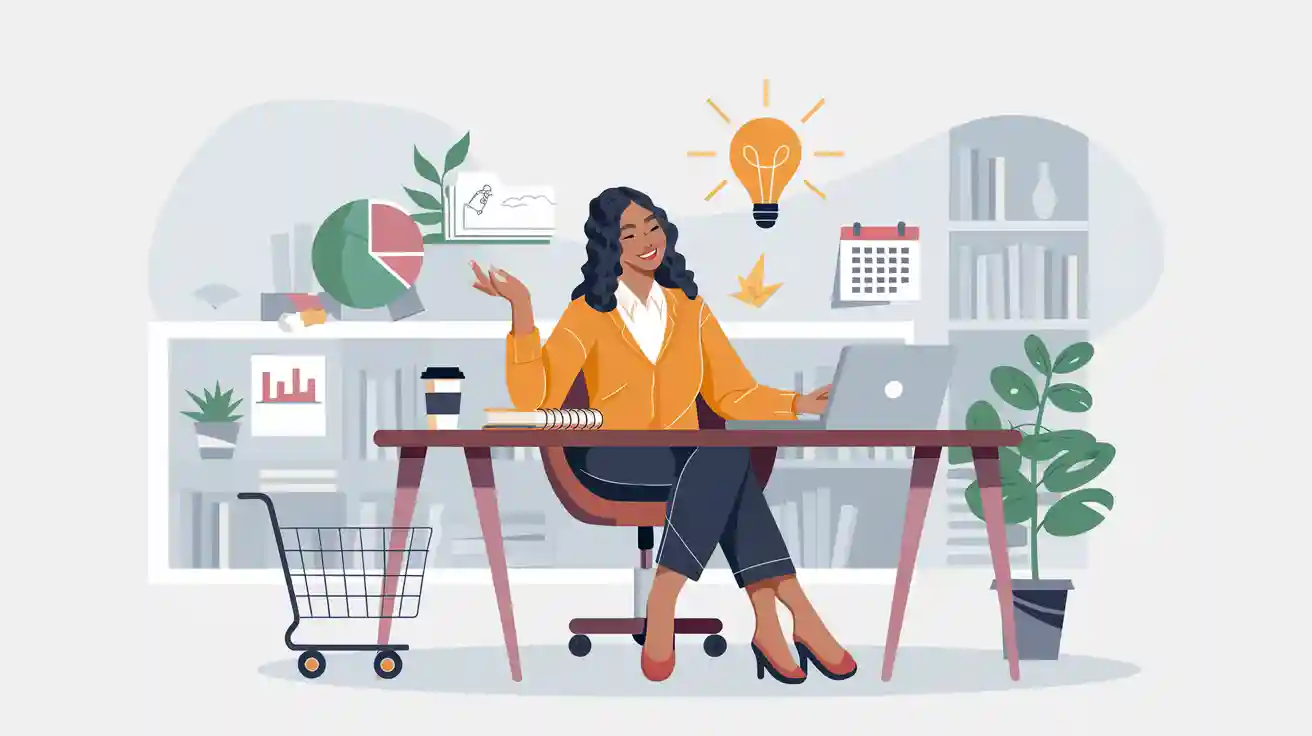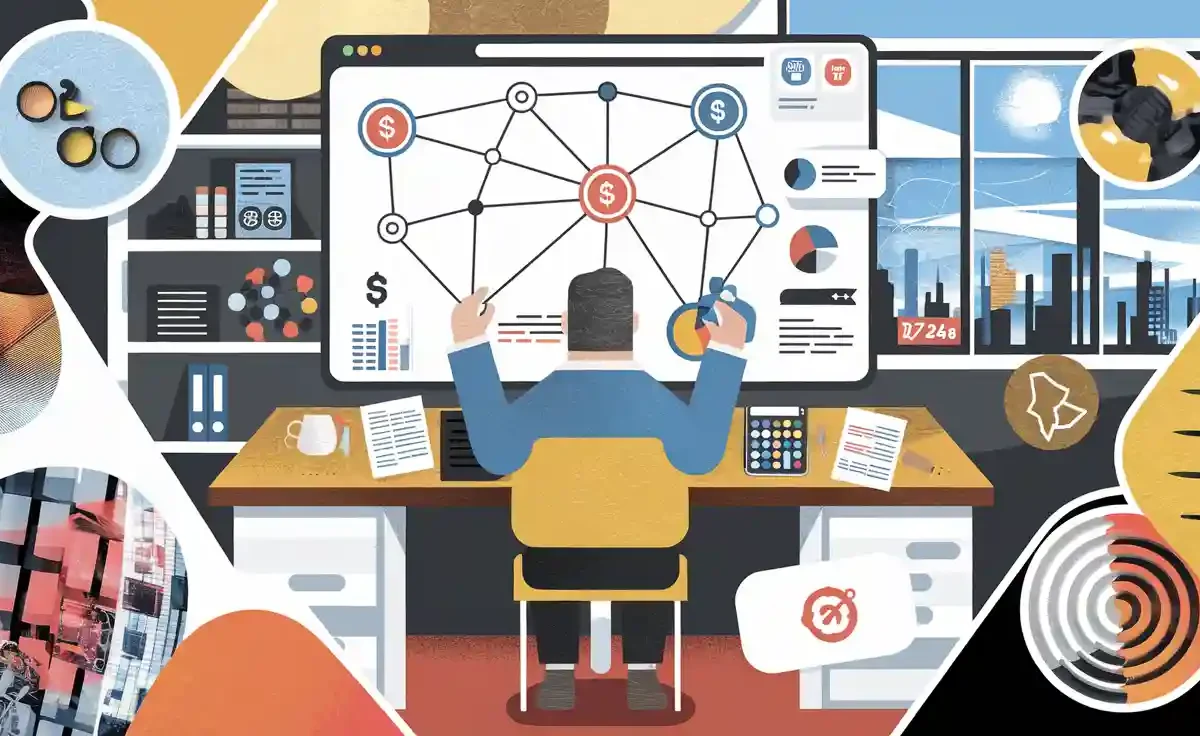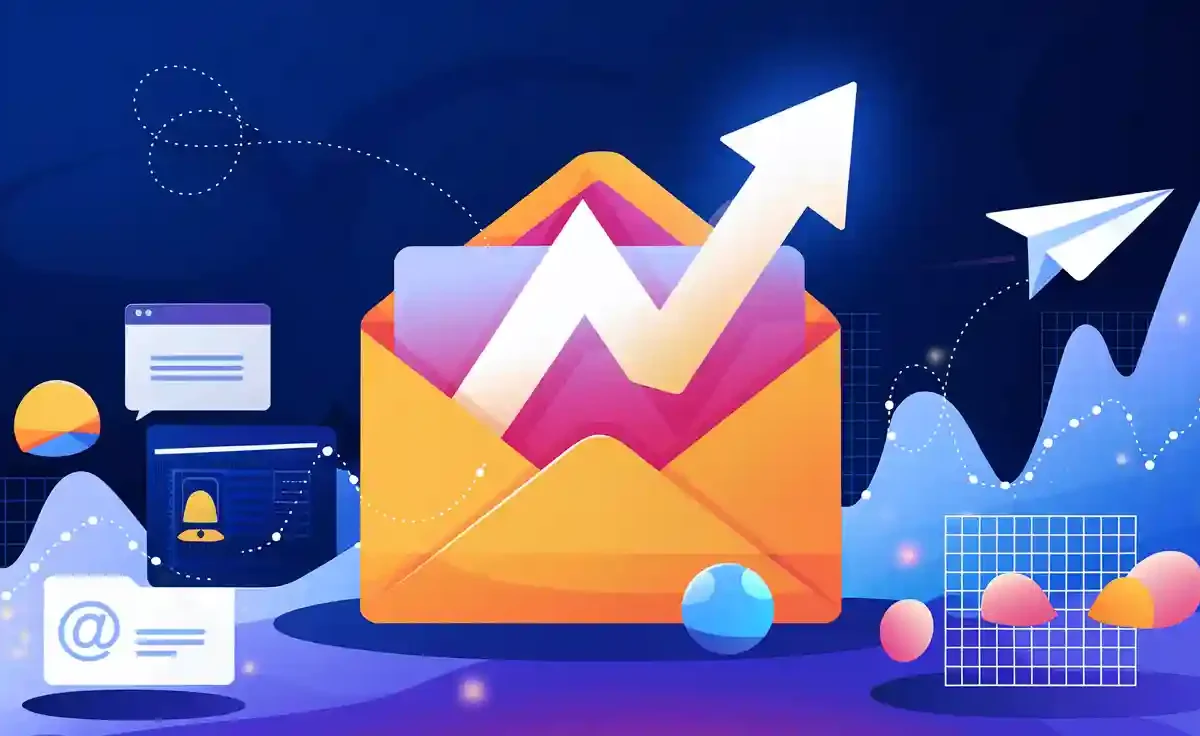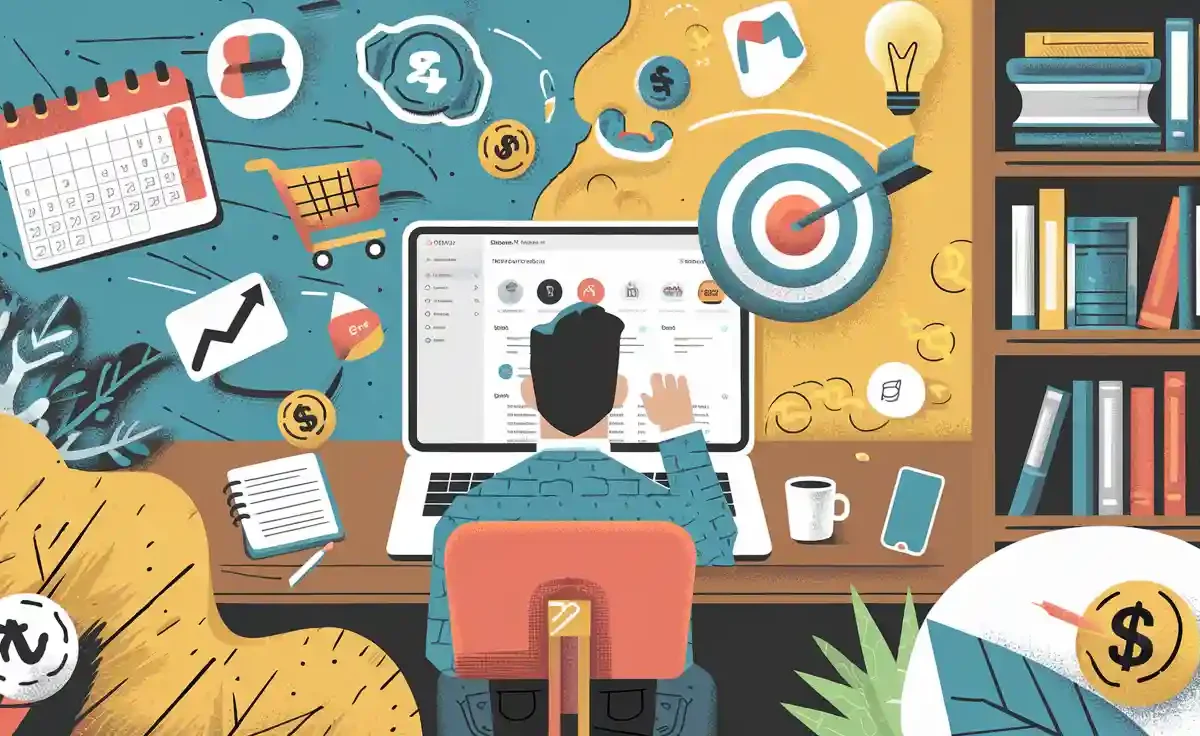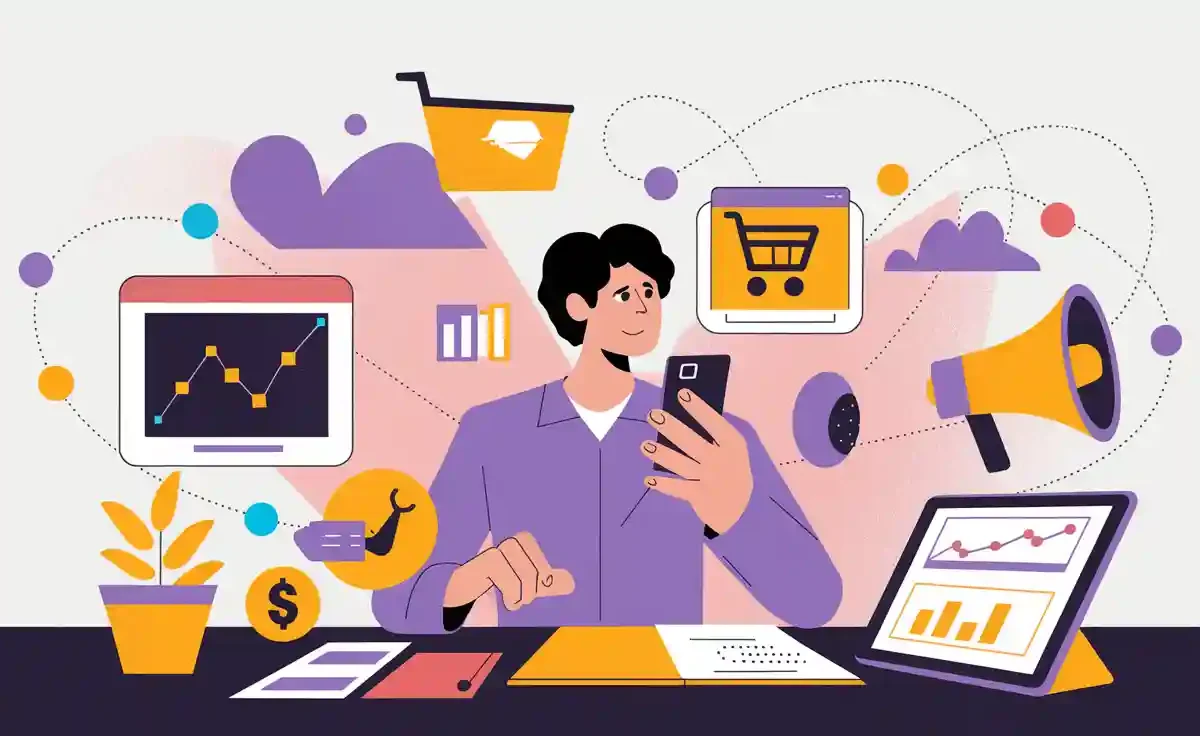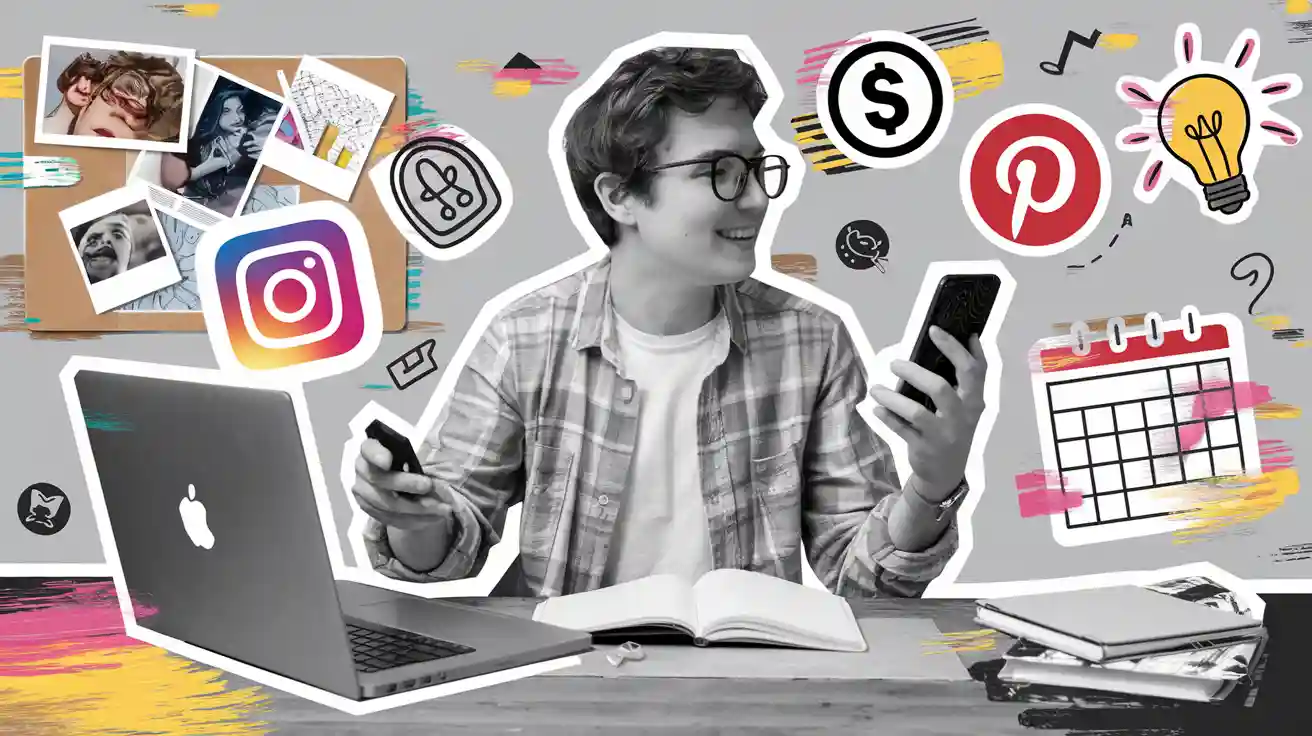
In 2025, Instagram and Pinterest are more than just social platforms—they’re thriving hubs to monetize your Instagram and other ventures. Pinterest alone generated over $3 billion in revenue in 2023, with its advertising reach growing to 307.6 million users by early 2024. Instagram continues to dominate with its visual appeal, making it easier than ever to connect your Instagram to your business and monetize your account effectively.
Why are these platforms so effective? Visual content drives traffic and engagement like nothing else. Posts with images get 150% more interaction, and Pinterest shoppers spend 87% more on luxury goods. To succeed, you need creativity and a strategy that aligns with your audience’s needs. By focusing on high-quality content and growing your audience, you can unlock endless monetization possibilities and profits, allowing you to truly monetize your Instagram.
Key Takeaways
Affiliate marketing is a great way to make money online. Share products you like and earn money through special links.
Selling digital items like e-books or courses can bring good income. Use bright pictures to catch attention on Instagram and Pinterest.
Sponsored posts let you work with brands and share real stories. Be honest to gain trust from your followers.
Offering coaching or advice can help you earn from your skills. Post helpful tips to show your knowledge and get clients.
Selling your photos and videos can give you extra money. Protect your work and share it well to find buyers.
1. Affiliate Marketing
Affiliate marketing remains one of the most effective ways to monetize your Instagram and make money using Pinterest. By promoting products or services through your content, you can earn commissions for every sale made through your unique affiliate links. Let’s explore how you can maximize this opportunity.
Partnering with Brands
Collaborating with brands is a great way to start affiliate marketing. Many companies actively seek influencers on Instagram and Pinterest to promote their products. You can reach out to brands that align with your niche or wait for them to approach you. Either way, authenticity is key. Promote products you genuinely believe in, as your audience will trust your recommendations more.
Affiliate marketing drives about 16% of eCommerce sales in the U.S. and Canada, proving its effectiveness. On Instagram, 45% of influencer affiliate campaigns take place, making it a hotspot for partnerships. Pinterest, with its visual appeal, also offers unique opportunities. Many affiliate marketers create guides or masterclasses to showcase how these products solve their audience’s problems. This approach not only builds trust but also boosts engagement.
Using Pinterest for Affiliate Links
Pinterest is a goldmine for affiliate marketing. With over 535 million monthly active users, it’s a platform where people actively search for ideas and products. In fact, 80% of weekly pinners use Pinterest with the intent to shop, and 55% view it as a shopping platform. This makes it ideal for sharing affiliate links.
To make money using Pinterest, focus on creating visually appealing pins that link directly to your affiliate products. Use keywords strategically in your pin descriptions to improve visibility. For example, if you’re promoting a fitness product, include terms like “workout tips” or “home gym essentials.” The Pinterest Creator Rewards Program can also help you earn extra income by rewarding high-performing content.
A strong Pinterest marketing strategy involves consistency. Post regularly, engage with your audience, and track your analytics to see what works. By doing so, you’ll not only drive traffic to your affiliate links but also establish yourself as a trusted source for recommendations.
Pro Tip: Combine affiliate marketing with the Pinterest Creator Rewards Program to maximize your earnings. This dual approach can significantly boost your income while helping you build a loyal following.
2. Selling Digital Products
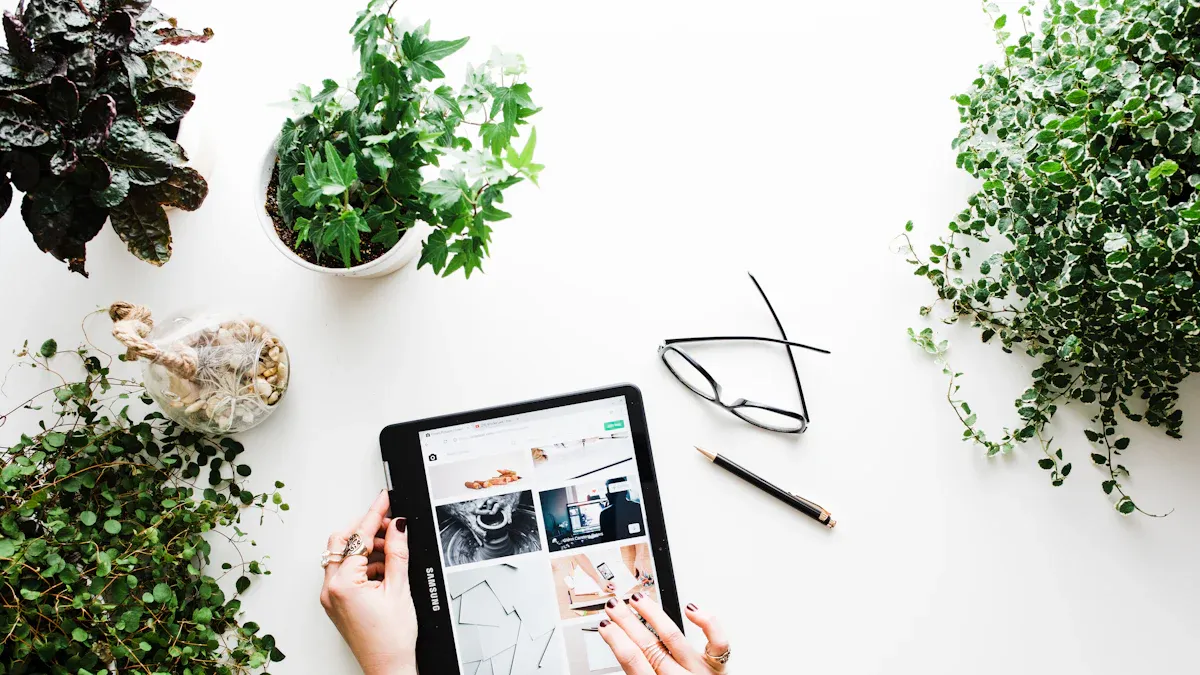
Selling digital products is one of the smartest ways to monetize your Instagram and make money on Pinterest. These platforms thrive on visual content, making them perfect for showcasing your creations. Plus, the demand for digital products has skyrocketed, with transactions increasing by nearly 70% in the last two years. Let’s dive into what you can sell and how to promote it effectively.
Types of Digital Products to Sell
You have endless options when it comes to digital products. Here are some ideas to get you started:
E-books and Guides: Share your expertise by creating downloadable resources. Whether it’s a fitness guide or a recipe book, people love easy-to-access knowledge.
Templates and Printables: Pinterest users adore planners, calendars, and design templates. These are quick to create and highly shareable.
Online Courses: If you’re skilled in a specific area, package your knowledge into a course. Instagram Stories and Reels are great for teasing course content.
Stock Photos and Graphics: Pinterest is a visual platform, so selling high-quality images or design elements can be lucrative.
Music or Audio Files: If you’re musically inclined, consider selling beats, sound effects, or even guided meditations.
The beauty of digital products is their scalability. Once you create them, you can sell them repeatedly without additional effort.
Promoting Digital Products
Promotion is key to driving traffic and boosting sales. Luckily, Instagram and Pinterest offer plenty of tools to help you succeed.
Create Shoppable Pins and Posts: Pinterest’s shoppable features make it easy for users to buy directly from your pins. On Instagram, use product tags to link your digital products.
Leverage Visual Content: Did you know that visual posts generate 650% higher engagement than text-only ones? Use eye-catching images and videos to showcase your products.
Use Shoppable Videos: Videos are a game-changer. They generate three times more conversions, and 50% of consumers are more likely to buy after watching one.
Optimize for Keywords: Pinterest is essentially a search engine. Use relevant keywords in your pin descriptions to increase visibility.
Engage Your Audience: Post consistently and interact with your followers. This builds trust and keeps your audience coming back for more.
By combining these strategies with a solid content plan, you can effectively monetize your Instagram and make money on Pinterest. Remember, the key is to stay consistent and adapt your approach based on what resonates with your audience.
Pro Tip: Use Pinterest’s analytics to track which pins drive the most traffic. This data helps you refine your strategy and focus on what works best.
3. Sponsored Content
Sponsored content is one of the most popular ways to monetize your Instagram and Pinterest accounts. By partnering with brands and creating authentic posts, you can turn your creativity into a steady income stream. Let’s explore how you can make the most of this opportunity.
Collaborating with Brands
Brands are always on the lookout for influencers who can help them reach their target audience. If you’ve built a loyal following on Instagram or Pinterest, you’re already in a great position to collaborate with them. Start by identifying brands that align with your niche. For example, if you focus on fitness, reach out to companies that sell workout gear or health supplements.
When pitching to brands, highlight your engagement rates and the value you bring to their campaigns. Pinterest, for instance, generated over $3 billion in revenue last year, with 80% of users discovering new products on the platform. This shows how effective sponsored content can be in driving traffic and boosting sales. By leveraging Pinterest ads, you can help brands expand their reach and achieve their goals.
Don’t wait for brands to find you. Be proactive. Use platforms like Aspire or Upfluence to connect with companies looking for influencers. The more you put yourself out there, the more opportunities you’ll find.
Creating Authentic Sponsored Posts
Authenticity is the secret sauce for successful sponsored content. Your audience can tell when a post feels forced, and that can hurt your credibility. Instead, focus on creating posts that blend seamlessly with your usual content. Share your genuine experience with the product or service.
High-quality visuals are a must. Posts with relevant images see 180% higher engagement rates. Consumers also trust authentic visuals 2.4 times more than stock photos. Use this to your advantage by incorporating user-generated content or showcasing the product in real-life scenarios.
For example, if you’re promoting a skincare brand, share a video of your morning routine featuring their products. This not only feels natural but also builds trust with your audience. On Pinterest, use visually appealing pins to grab attention and include keywords in your descriptions to improve visibility.
Remember, the goal is to provide value to your audience while helping brands achieve their objectives. With the right strategy, sponsored content can become a significant part of your monetization plan.
Pro Tip: Always disclose sponsored posts to maintain transparency. This builds trust with your audience and keeps you compliant with advertising guidelines.
4. Offering Coaching or Consulting
If you’re an expert in your field, offering coaching or consulting services can be a fantastic way to monetize your Instagram and Pinterest presence. These platforms are perfect for showcasing your expertise and connecting with potential clients who need your help.
Identifying Your Expertise
The first step is figuring out what you’re really good at. Are you a fitness guru, a marketing whiz, or a DIY craft expert? Narrowing down your niche is crucial. It helps you stand out and makes it easier for people to trust you. For example:
Targeting a niche reduces competition and boosts engagement.
Platforms like Instagram reward niche content with better reach, helping you connect with the right audience.
Consistently posting within your niche builds credibility and positions you as an expert.
Pinterest is especially useful for coaches. It acts like a search engine, helping users discover content based on their interests. People often visit Pinterest looking for solutions to their problems, which aligns perfectly with the services you offer. By sharing how-tos, case studies, or guides, you can highlight the gap between where your audience is now and where they could be with your help.
Promoting Your Services
Once you’ve identified your expertise, it’s time to promote your services. Instagram and Pinterest offer plenty of tools to help you reach your audience. Here’s how you can get started:
Create Engaging Content: Share tips, success stories, or behind-the-scenes looks at your coaching process. This builds trust and shows potential clients what you can do for them.
Use Visuals to Your Advantage: High-quality images and videos grab attention. On Instagram, Reels and Stories are great for showcasing your personality and expertise. Pinterest, on the other hand, thrives on visually appealing pins that link back to your website or booking page.
Track Your Metrics: Keep an eye on metrics like engagement rate, reach, and customer acquisition cost. These numbers help you understand what’s working and where you can improve.
Metric | Description |
|---|---|
Impressions | Total number of times users see your content, showing visibility. |
Engagement Rate | Measures how much users interact with your posts, reflecting relevance. |
Customer Acquisition Cost (CAC) | Tracks how much it costs to gain a new client, helping you assess your ROI. |
By using a solid strategy and focusing on driving traffic to your services, you can turn your expertise into a thriving business. Remember, consistency and authenticity are key to building a loyal client base.
Pro Tip: Use Pinterest to create pins that link directly to your coaching services. This not only drives traffic but also positions you as a go-to expert in your niche.
5. Selling Physical Products
Selling physical products is a fantastic way to turn your Instagram and Pinterest accounts into revenue-generating machines. These platforms thrive on visual content, making them ideal for showcasing your products and connecting with potential buyers. Let’s break it down into two key steps.
Setting Up an Online Store
The first step is creating an online store where customers can browse and purchase your products. You don’t need to be a tech wizard to get started. Platforms like Shopify, WooCommerce, or Etsy make it easy to set up a professional-looking store. They also integrate seamlessly with Instagram and Pinterest, allowing you to connect your store directly to your social media accounts.
Social commerce is booming. Businesses are using social media not just for ads but as direct sales channels. This trend is reshaping e-commerce. By linking your store to Instagram’s Shop feature or Pinterest’s Product Pins, you can create a seamless shopping experience. Customers can discover your products, click on them, and complete their purchases without leaving the platform.
Pro Tip: Use high-quality images and detailed descriptions for your products. Visual appeal is everything on Instagram and Pinterest.
Driving Sales Through Social Media
Once your store is live, it’s time to drive traffic to the e-commerce store. Instagram and Pinterest are perfect for this. On Instagram, use Reels, Stories, and posts to showcase your products in action. For example, if you sell handmade jewelry, share a video of someone wearing your pieces. Pinterest, on the other hand, works like a search engine. Create visually stunning pins with keywords that match what your audience is searching for.
Social commerce blends e-commerce and social media, helping you stay connected with followers while increasing revenue. Influencer marketing can also boost your sales. The industry is projected to grow to $21.1 billion in 2023, proving its effectiveness. Partner with influencers who align with your brand to reach a wider audience.
Pro Tip: Use Pinterest analytics to see which pins drive traffic to the e-commerce store. This helps you refine your strategy and focus on what works.
By combining these strategies, you can turn your Instagram and Pinterest accounts into powerful tools for selling physical products.
6. Subscription-Based Content
Subscription-based content is a fantastic way to build a steady income stream while offering your audience exclusive value. Platforms like Instagram and Pinterest make it easier than ever to promote and manage these services. Let’s explore how you can get started.
Platforms for Subscription Services
Choosing the right platform is key to your success. Instagram and Pinterest both offer tools to help you connect with your audience and drive subscriptions. Here are some popular options to consider:
Patreon: Perfect for creators offering exclusive content like tutorials, behind-the-scenes access, or early releases.
Substack: Ideal for writers and bloggers who want to monetize newsletters.
Ko-fi: Great for artists and creatives looking to offer memberships or one-time perks.
Instagram Subscriptions: This feature allows you to offer exclusive Stories, Reels, or live sessions directly on the platform.
Pinterest: While Pinterest doesn’t have a built-in subscription feature, it’s a powerful tool for driving traffic to your subscription page.
Pinterest users are highly engaged, with 55% viewing it as a shopping destination. This makes it an excellent platform for promoting premium services. Plus, 96% of Pinterest searches are unbranded, meaning users are open to discovering new creators and offerings.
Promoting Your Subscription
Promotion is where the magic happens. To attract subscribers, you need to showcase the value of your content. Here’s how you can do it effectively:
Leverage Visual Content: High-quality visuals grab attention. Posts with relevant images see 180% higher engagement, and videos can boost purchase likelihood by 85%. Use Instagram Reels or Pinterest pins to highlight what subscribers will gain.
Offer a Sneak Peek: Share snippets of your exclusive content. For example, if you’re offering a fitness plan, post a short workout video or a sample meal plan.
Use Keywords Strategically: Pinterest acts like a search engine. Optimize your pin descriptions with terms your audience is searching for, like “exclusive tips” or “premium content.”
Engage Your Audience: Build trust by interacting with your followers. Respond to comments, ask questions, and create polls to understand their needs.
Pinterest drives nearly 10% of social media web traffic referrals, making it a powerful tool for visibility. Combine this with Instagram’s subscription features, and you have a winning strategy for monetization.
Pro Tip: Use authentic visuals instead of stock photos. They increase consumer trust by 2.4 times and lead to higher conversion rates.
By choosing the right platform and promoting your subscription effectively, you can turn your Instagram and Pinterest presence into a reliable source of income.
7. Hosting Virtual Events
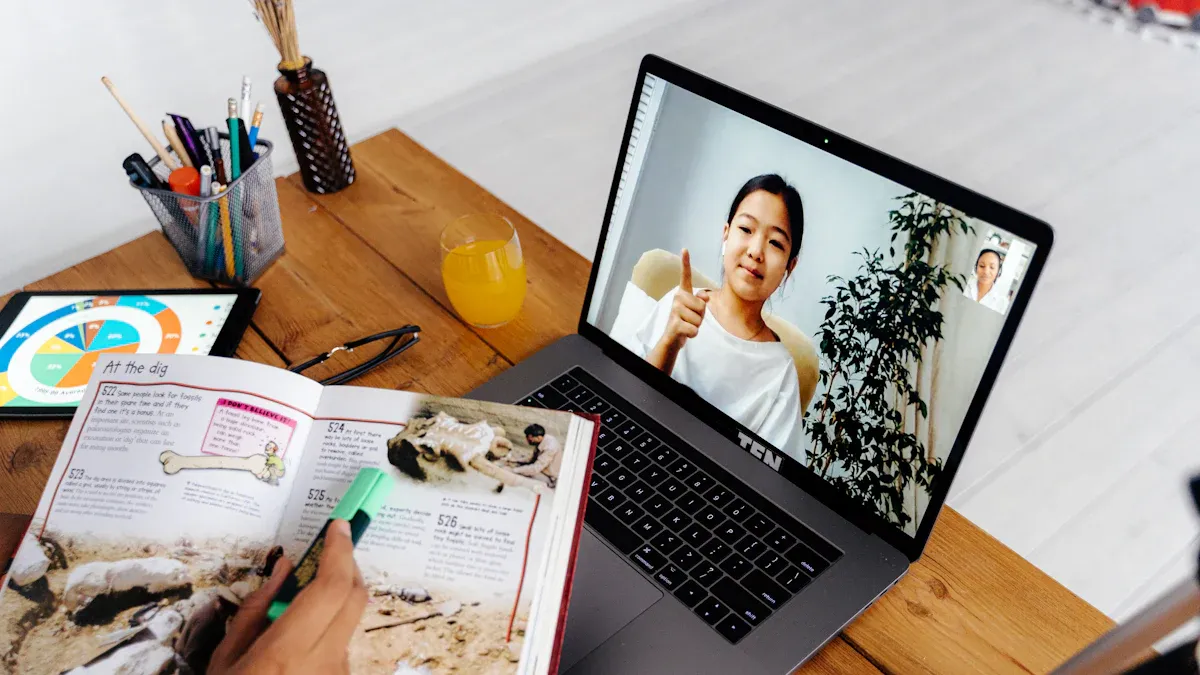
Virtual events have become a game-changer for creators and businesses alike. They allow you to connect with your audience, share value, and generate income—all from the comfort of your home. Let’s explore how you can make the most of this opportunity.
Types of Virtual Events
There’s no one-size-fits-all when it comes to virtual events. You can tailor them to your niche and audience. Here are some popular options to consider:
Workshops and Tutorials: Teach your audience a skill, whether it’s cooking, crafting, or photography. These events are perfect for showcasing your expertise.
Webinars: Share valuable insights or strategies in your field. Webinars work well for building authority and trust.
Live Q&A Sessions: Engage directly with your followers by answering their questions in real time. This format fosters a sense of community.
Virtual Conferences: Collaborate with other creators or brands to host a multi-session event. These are great for reaching a broader audience.
Exclusive Performances or Shows: If you’re an artist or performer, host a live concert or showcase your work.
Virtual events are on the rise. Over 70% of marketers who’ve hosted online conferences plan to do more, and 49% of organizations now host 20-30 virtual events annually. This trend shows no signs of slowing down.
Promoting and Monetizing Events
Promotion is key to filling up your virtual event seats. Platforms like Instagram and Pinterest make it easy to spread the word and drive sign-ups. Here’s how you can do it:
Create Eye-Catching Visuals: Use Instagram Stories, Reels, and Pinterest pins to promote your event. High-quality visuals grab attention and boost engagement.
Leverage Targeted Ads: Sponsored content and targeted ads on Instagram can help you reach the right audience. Regularly monitor metrics like impressions, clicks, and conversions to optimize your campaigns.
Offer Early-Bird Discounts: Encourage sign-ups by offering special pricing for early registrants. This creates urgency and drives action.
Engage Your Audience: Build excitement by sharing sneak peeks or behind-the-scenes content. Use polls or Q&A stickers on Instagram to involve your followers.
Monetize Through Tickets or Sponsorships: Charge an entry fee or partner with brands to sponsor your event. Many hosting organizations expect to increase their spending on online experiences, making sponsorships a lucrative option.
Virtual events also expand your reach. Over 80% of event marketers report that switching to online formats helps them connect with larger audiences. By combining Instagram’s visual appeal with Pinterest’s searchability, you can maximize your event’s success.
Pro Tip: Track attendee engagement and satisfaction. These are the top KPIs for 80% of event organizers and can help you refine your future events.
8. Licensing Your Content
Licensing your content is a smart way to turn your creativity into a steady income stream. If you’re already creating high-quality photos or videos for Instagram and Pinterest, why not let others pay to use them? This approach not only generates revenue but also boosts your brand’s visibility.
Selling Your Photos and Videos
Your photos and videos are valuable assets. Many brands, bloggers, and businesses are constantly looking for fresh, authentic content to use in their marketing. By licensing your work, you allow others to use it while retaining ownership. This creates a win-win situation—you earn money, and they get unique visuals.
Platforms like Instagram and Pinterest are perfect for showcasing your portfolio. On Instagram, you can use Stories or Reels to highlight your best work. Pinterest, with its search engine-like functionality, helps your content reach a broader audience. For example, if you specialize in travel photography, create pins with keywords like “wanderlust destinations” or “travel inspiration.” These can link directly to your licensing page.
Licensing your content has several benefits:
It creates new revenue streams from content you’ve already made.
It enhances your brand’s exposure by distributing your work across different channels.
It maximizes the financial value of your creative efforts on Instagram and Pinterest.
Pro Tip: Use platforms like Shutterstock or Adobe Stock to license your work. These sites make it easy to connect with buyers and manage your sales.
Protecting and Promoting Your Work
Protecting your content is just as important as selling it. You don’t want others using your photos or videos without permission. Start by watermarking your images before posting them on Instagram or Pinterest. This discourages unauthorized use while still showcasing your work.
You should also register your content with copyright protection services. This ensures you have legal ownership and can take action if someone uses your work without credit. Tools like Pixsy or Copytrack can help you monitor where your content appears online.
Promotion is the next step. Use Instagram’s Highlights to create a portfolio of your licensed work. On Pinterest, create boards dedicated to your photos or videos, making it easy for potential buyers to browse. Consistency is key—post regularly and engage with your audience to build trust and credibility.
Pro Tip: Add a call-to-action in your Instagram bio or Pinterest profile, directing users to your licensing page. This makes it easier for interested buyers to reach you.
Licensing your content isn’t just about earning money. It’s also a great way to establish yourself as a professional creator. By protecting your work and promoting it effectively, you can turn your passion into a thriving business.
You’ve just explored eight creative ways to monetize your Instagram and Pinterest accounts in 2025. From affiliate marketing and selling digital products to hosting virtual events and licensing your content, these strategies offer endless opportunities. Pinterest alone generated $3.055 billion in revenue, with 80% of users discovering brands and products. Instagram’s Reels saw a 52% increase in impressions, proving the power of visual content.
Now it’s your turn! Experiment with these methods and adapt them to your niche. Whether you’re a creator, coach, or entrepreneur, there’s a strategy here for you. Start small, stay consistent, and watch your efforts grow into a thriving income stream. The time to monetize your Instagram and Pinterest presence is now—don’t wait to take action!
FAQ
What’s the best way to start monetizing Instagram or Pinterest?
Start by identifying your niche and audience. Then, choose a strategy like affiliate marketing, selling products, or offering coaching. Pinterest works great for driving traffic, while Instagram excels at building personal connections. Focus on creating high-quality, engaging content to attract followers and potential customers.
Can you use Pinterest for affiliate marketing?
Absolutely! Pinterest is perfect for affiliate marketing. Create visually appealing pins that link to your affiliate products. Use keywords in your pin descriptions to improve visibility. Many users visit Pinterest to shop, so it’s a great platform to drive sales and earn commissions.
How do you grow your audience on Pinterest?
Consistency is key. Post regularly and use keywords to optimize your pins for search. Engage with your audience by responding to comments and sharing valuable content. Pinterest analytics can help you track what works and refine your strategy for better results.
Is it possible to sell physical products directly on Pinterest?
Yes, you can! Use Pinterest’s Product Pins to showcase your items. These pins allow users to shop directly from the platform. Pair this with high-quality images and detailed descriptions to attract buyers. Pinterest’s visual nature makes it ideal for promoting physical products.
What’s the most important tip for successful monetization?
Stay authentic. Whether you’re promoting products or offering services, your audience values honesty. Build trust by sharing genuine experiences and high-quality content. Platforms like Pinterest and Instagram reward creators who consistently engage their audience with valuable, relatable posts.
